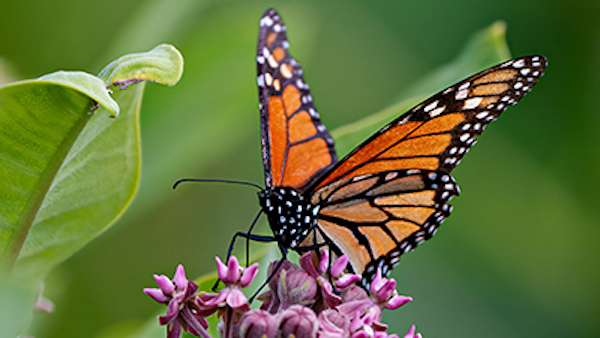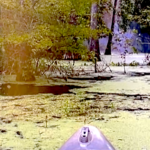Maribel Alonso
USDA
The monarch butterfly (Danaus plexippus L.) is one of the most widely popular butterfly species in North America. We are accustomed to seeing its beautiful orange wings with black-veined outlines flying in gardens and wildflower fields during the summer season.
Can you envision the summers without the monarch butterfly? Imagine the impact on the flora and ecosystem diversity of North America if this iconic species became extinct.
To ensure this imaginative but plausible scenario can be preventable, USDA scientists at the Agricultural Research Service (ARS) Weed and Insect Biology Research Unit, in Fargo, North Dakota, developed the first known cryopreservation protocol for the successful long-term storage of monarch butterfly germplasm, specifically for preserving germ cells (spermatozoa or sperm cells). More importantly, the technique used in this protocol allows for the preserved samples to remain viable and highly intact post-cryopreservation.
“An important aspect of insect conservation is habitat conservation. Our research is a new approach to conservation through germplasm cryopreservation,” explained Courtney Grula, a scientist at the Weed and Insect Biology Research Unit. “This study is the first to implement a technique to extract semen from the male reproductive tract in insects, a common technique used in mammals.”
The viable sperm cells can one day be used with artificial insemination to bring back this species of butterflies in the event of a population loss. Although more studies are needed to develop an artificial insemination protocol using cryopreserved sperm cells from male butterflies, the study shows that this protocol is a viable method for germplasm conservation in this and similar species. Furthermore, ARS researchers in Fargo are assessing artificial insemination techniques for female butterflies using cryopreserved sperm cells from male butterflies.
The monarch butterfly population was classified as an endangered species in North America by The International Union for Conservation of Nature. This was due to a rapid population decline that was observed from 1996 to 2014, followed by its stabilization over the past decade. Even though the current numbers are at a level of lesser concern, the decreasing trend has not stopped. Estimating the exact numbers is challenging due to their breeding and migratory behavior, as the monarch butterfly migrates every year long distances in a multi-generational migration that extends from Mexico to Canada.
Like other pollinator species, the monarch butterfly’s survival is threatened by climate change, the loss of native plants – milkweeds – and the rapid disappearance of their habitats.
Scientists are collaborating with stakeholders to protect this species, including teaching the cryopreservation technique to researchers and breeders at the San Diego Zoo. In addition, they are working on extending the cryopreservation technique to cryopreserve spermatozoa from other endangered species, such as the Sacramento checkerspot butterfly, which is endemic to New Mexico.
Grula, Research Biologist Arun Rajamohan, and Research Leader Joseph (Joe) P. Rinehart describe the technique in a study recently published in Scientific Reports.
“For people who are interested in helping monarch populations, they can plant common milkweed [Asclepias syriaca] in their yard, as this is utilized by monarchs for egg laying and larval diet,” added Grula.
Learn about USDA’s efforts to conserve monarch butterflies’ habitats:







